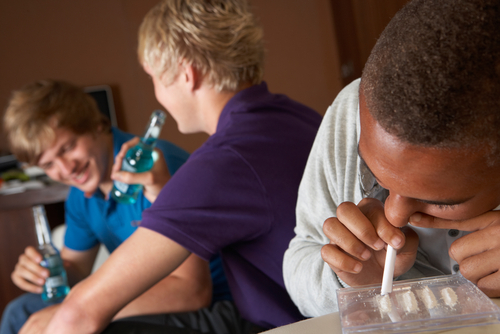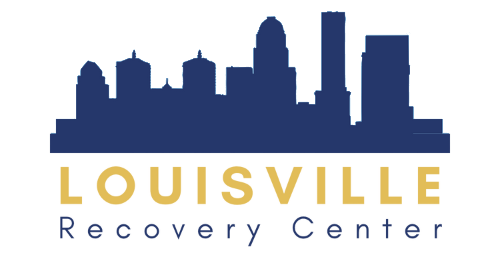How Many Teens Use Cocaine? Stats, Sources, & Effects
If you want to know how many teens use cocaine in the U.S., this article is for you. The thought their teen might be hanging around a bad crowd might come up a few times in a parent’s life, and they’ll likely do anything to prevent negative or illegal influence from reaching them. However, they might be unaware that cocaine use is happening right under their nose and originated from sources they would never expect.
This article highlights how many teens use cocaine in the U.S., how most teens come in contact with illegal substances, and how it affects their mental and physical brain health.

How Many Teens Use Cocaine?
According to the latest 2023 report, 0.42% of 12 to 17-year-olds in the U.S. used cocaine in the last year, with 1.6% of all 12th graders trying crack cocaine at least once. That’s over 100,000 teens trying cocaine out of the 25.8 million in the U.S. Another study reported that cocaine use among adolescents has decreased in the last 20 years, where 508,000 teens reported using cocaine in 2002.
However, when it comes to stimulants, adolescents are more likely to abuse prescription medications, such as Adderall or Ritalin, rather than cocaine. This is likely because of the increase in mental health awareness, which encouraged more people to seek treatment but also led to an increase in stimulant prescriptions. (Prescription stimulant fills increased from 3.6% in 2016 to 4.1% in 2021). If more people have Adderall, Dexedrine, Concerta, or Ritalin on hand, they could be enticed to abuse their prescriptions or share/sell them to friends or strangers.
Read more: What Is The Number One Drug Used By Teens (Post-Cannabis Legalization)

How Do Teens Come In Contact With Cocaine?
Since cocaine is a Schedule II substance in the U.S., teens probably come in contact with cocaine the same way as adults: through parties, friends, or relatives. Many teenagers can probably pick out one friend from their social group who has access to or knows someone who can get cocaine. Most of the time, cocaine use begins in a social environment where alcohol, cigarettes, or cannabis are also present. One report found that children and adolescents rarely try or abuse cocaine before alcohol, cigarettes, and vapes.
Teens are usually too afraid to walk up to a random stranger on a curb and ask for drugs, let alone cocaine. They’ll probably encounter cocaine when a friend or friend of a friend pulls them aside at a party, concert, or other event and shows them a tiny vial or bag. Cocaine is usually known as a “party” or “club” drug, so most teens abusing it are likely to share it with one or two friends. Since it’s expensive, most teens at a party might not even realize a few friends have split off to the bathroom to try something “new and exciting.”
Unfortunately, the National Institute on Drug Abuse (NIDA) estimates that 10% of Americans, including those aged 12 to 17, who begin to use cocaine transition to heavy use. That’s a little more than 10,000 adolescents abusing cocaine after their first try.
Read more: 7 Reasons Why Teens Are More At Risk For Addiction Than Adults
How Does Cocaine Affect The Adolescent Brain?
Cocaine can damage an adolescent’s brain more severely than adults since the brain goes through its most changes between 12 and 20.
- Cognitive abilities: Teenagers are typically filled with energy and motivation. However, cocaine abuse heavily impacts the orbitofrontal cortex’s ability to function. This leads to poor decision-making skills, an inability to accept negative side effects of drug use, and a lack of self-control. This can make the most energetic parts of their lives filled with bad decisions and possible life-long consequences. For example, snorting cocaine can eat away at the nasal cavity and might leave teens with damaged noses into adulthood.
- Blood flow to the brain: Cocaine abuse can impact the brain’s ability to regulate the body’s cardiovascular system. Snorting or injecting cocaine can damage the lining of major veins and arteries, restricting blood flow to the brain and causing chronic headaches. If those arteries are cut off, blood clots can form and lead to a stroke. Binging or chronic cocaine use can also cause seizures and potentially a seizure disorder that requires long-term treatment separate from addiction treatment.
- Gray matter: As the brain ages, it slowly begins to lose gray matter over many decades, which is why older people generally experience memory problems, cognitive changes, and dementia. One 2012 study found that people who abuse cocaine or had a cocaine use disorder lost gray matter at double the rate of those with no history of substance abuse (1.69 millimeters per year compared to 3.08 millimeters per year). The same report highlighted that mostly older generations with wider access to drugs suffered from an accelerated aging process from cocaine abuse.
- Glucose metabolism: One report found that teens struggling with cocaine had reduced levels of glucose metabolism, which gives cells vital nourishment from carbohydrates. If this process is disrupted, cells will die and lose the ability to provide for other organs. This can lead to hypoglycemia, hyperglycemia, metabolic syndrome, and diabetes since glucose metabolism is directly connected to insulin production.

How Does Cocaine Affect Adolescent Mental Health?
Cocaine in any form can cause long-term damage to an adolescent’s mental health. Because cocaine interferes with dopamine production, it’s common for teens to feel a strong sense of depression and anxiety when the drug’s effects fade. This creates an unhealthy cycle of cocaine use followed by severe depression. Frequently abusing cocaine can cause a teenager to develop a tolerance to its effects and require them to take more to feel the same “high”, amplifying the comedown even more.
Cocaine use can also be linked to people already struggling with depression, anxiety, personality, and attention deficit hyperactivity disorders. Some teens may not be aware they have an underlying mental health disorder. Instead of seeking professional treatment, they use cocaine to self-cope. Abusing stimulants like cocaine and meth can also make psychosis or schizophrenia worse and harder to treat when combined with substance abuse. Even if a teen doesn’t develop a thought disorder, cocaine’s impact on the stress hormone cortisol can worsen anxiety, panic, aggression, and violence.
Read more: How Does Cocaine Affect The Nervous System?
Teen Cocaine Treatment In Louisville, KY
If you or a teen you know is abusing cocaine, contact Louisville Recovery Center. Our adolescent addiction treatment program is the perfect place for teens aged 12-17 to find the help they need. Cocaine use isn’t the path to happiness, and our compassionate and caring staff want to help teens find true meaning in life as they transition into adulthood and become individuals. Our adolescent intensive outpatient program doesn’t require teenagers to stay overnight, so they can take home and practice the skills they learn in treatment the very same day with their family.







